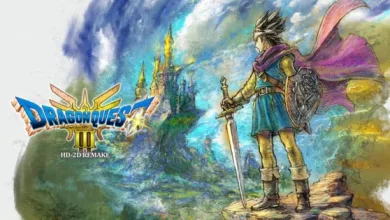Who Made Me a Princess Volumes 1-3 Manhwa Review – Review

In The Perks of Being an S-Class Heroine, heroine Ailette’s greatest desire is to be reborn into what she calls a “child-raising romantasy,” a subgenre of isekai where the heroine, an ordinary woman in her previous life, ends up starting from babyhood as the pampered princess of a powerful ruler. She doesn’t mention that in at least two of the manhwa titles in that subgenre to receive English translations, that comes with a father who isn’t only ludicrously young and handsome. He’s also two steps away from being evil and murdering his daughter when she’s older. That’s the fate that awaits Athanasia, the reluctant infant daughter of Claude, an angry emperor who, according to the book they’re both characters in, has Athy executed for made-up crimes against her half-sister Jeannette.
Who Made Me a Princess, which has a Chinese donghua adaptation from Colored Pencil Animation upcoming as of this writing, may not be villainess isekai crossed with child-raising romantic fantasy, but it’s the next best thing. Part of what makes this distinction is that Athanasia herself is fully aware from the start that she’s no villainess: she’s a tragic character whose death in the novel she’s been reborn into is meant to be understood as such. The original Athanasia’s death in the in-world romance The Lovely Princess occurs to highlight the fact that her father, Emperor Claude of Obelia, is a cruel, emotionally impaired man who doesn’t have it in his heart to love both Athy and Jeannette. It is therefore easy for him to blame Athy and kill her in what he believes is service of Jeannette, even though readers are fully aware that Athy has done nothing to deserve her fate. That means, the current Athy thinks, that there’s no real way out for her: it’s not like she can avoid being mean to Jeannette because in the original book, she didn’t, and she still died. Her best plan is to avoid Claude altogether, squirrel away valuable items from her quarters, and make a break for it as soon as she’s old enough.
Naturally, that doesn’t happen. When Athy accidentally bumps into her father years before she’s supposed to in the book, she sparks his interest and is forced to conceive a new plan: charm the pants off him and ensure her survival that way. This immediately takes her outside of the preconceived constructs of the narrative, forcing Athy to see her father as a person rather than a character and, more importantly, ensuring that he behaves like a human being with some serious emotional baggage instead of a one-dimensional villain. As the two interact, it becomes clear that Claude lived a fairly awful life before ascending the throne, which he seems to have done because his older brother wasn’t a fit ruler. Athy’s mother was a foreign dancer Claude was presumed to have just slept with, meaning that her child was beneath his notice, but as the story unfolds, it starts to look more like Claude adored her and then blamed his daughter for her mother’s death in childbirth. When he meets a five-year-old Athanasia (and realizes what her mother named her; “Athanasia” means “immortal,” a type of name reserved for heirs to the throne), he’s forcibly reminded of what he loved about her mother. Although he doesn’t say it, it looks like he understood that he didn’t just lose someone, he gained someone as well.
Not that he’s willing to say anything like this. Athy spends most of these first three (of eight) volumes panicking because she doesn’t fully understand her father’s actions and is afraid that he’ll turn on her. That Claude is bad at interacting with, well, anyone (but especially children) certainly doesn’t help – he slings her under his arm to carry her at first, inundates her with pastry because that’s what he’s heard kids like, and generally seems to forget the whole “dere” part of his tsundere personality. Felix, his knight, knows otherwise, and one of the clearest signs of Claude’s favor is that he assigns Felix, one of the few people he trusts, to guard his daughter. We can understand what he’s thinking because we’re on the outside of the story, though; for Athy, who’s living it, it’s a lot more difficult to figure her father out.
That’s the main source of conflict for the first two volumes when Athy is between infancy and age seven. In the back half of volume two and volume three, Athy reaches age fourteen, adding a new layer of complications. That’s the age when Jeannette is supposed to be introduced by the scheming Duke Alpheus, who plans to use her to oust Athy and secure his power, the events that kick off the main story. Athy’s unexpected relationship with Claude has thrown a wrench into Alpheus’ plans but he’s still trying to foist Jeannette on the emperor and his son Ezekiel on Athy – first as a playmate, and later as a romantic possibility. Volume two also introduces Lucas, a powerful sorcerer who looks like he could also be a romantic interest down the line. Lucas shows up when Athy’s magic runs wild, nearly killing her despite having siphoned off into an adorable magical puppy. Disguising himself as a child her age, Lucas weasels his way into Athy’s life for reasons that aren’t entirely clear. At least part of it is that he knows that she’s an adult otherworlder insider (a reminder that makes him much more viable as a romantic interest.) Still, he’s also clearly got another agenda, which is concerning.
The art for this series is a major draw. Spoon’s work looks similar to Mini‘s on Doctor Elise: The Royal Lady with the Lamp, indulging in beautiful colors and richly detailed outfits. They aren’t always consistent in skirt lengths and widths, but since there’s not a clear period being referenced, that’s not much of an issue. Spoon also has a way with chibis and baby faces that add humor to the work, and the jewel eyes that set the royal family apart are very well done. The story is good, but there’s a sense that this is perhaps skipping over some sections of the original web novel. It makes narrative sense, but it’s still a bit disjointed, and that robs some of the developments of their emotional heft.
Still, despite its issues, Who Made Me a Princess is a good story. Combining elements of several “transmigration” subgenres (manhwa tends to use that word rather than the Japanese isekai), Athy’s continual growth keeps the plot from feeling stagnant and shows us how she’s coping with her second life. The art is the main feature, but the story will keep you interested and returning for more.
Source link
#Princess #Volumes #Manhwa #Review #Review


